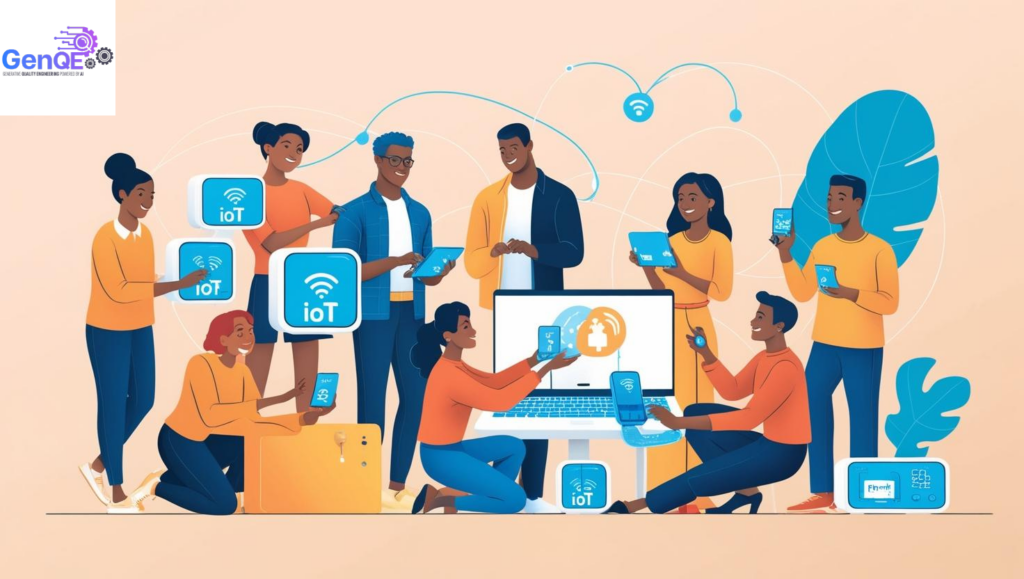
The convergence of Artificial Intelligence (AI) and the Internet of Things (IoT) is revolutionizing how we interact with technology, making environments smarter, more efficient, and highly responsive. From smart homes and autonomous vehicles to intelligent healthcare systems and industrial automation, the integration of AI and IoT is unlocking a new era of connected intelligence.
Let’s explore how AI enhances IoT, the impact of smart environments, and the future of this powerful synergy.
🤖 1️⃣ How AI Enhances IoT Capabilities
IoT devices generate vast amounts of data from sensors, cameras, and connected systems. However, raw data alone is not valuable unless analyzed and acted upon effectively. This is where AI steps in—by applying machine learning (ML) and advanced analytics, AI transforms IoT data into meaningful insights and intelligent automation.
✅ Key Benefits of AI in IoT:
- Automated Decision-Making – AI enables IoT devices to analyze data in real time and make intelligent decisions.
- Predictive Maintenance – AI-powered IoT predicts failures before they happen, reducing downtime in industries.
- Enhanced Security – AI detects anomalies in network traffic, preventing cyber threats in IoT ecosystems.
- Energy Efficiency – AI optimizes energy consumption by adjusting systems based on usage patterns.
🏡 2️⃣ Real-World Applications: AI-Driven Smart Environments
🏠 1. Smart Homes & Cities
IoT-powered smart homes use AI to automate lighting, security, and appliances based on user behavior. Smart cities leverage IoT sensors and AI to manage traffic, reduce energy waste, and enhance public safety.
✅ Example: AI-enabled thermostats adjust room temperature based on weather, occupancy, and personal preferences, reducing electricity bills.
🏥 2. Healthcare & Remote Patient Monitoring
AI-powered IoT devices track heart rate, oxygen levels, and other vitals in real-time, enabling early disease detection and personalized healthcare.
✅ Example: Wearable devices like smartwatches alert doctors if a patient’s heart rate fluctuates abnormally, preventing critical emergencies.
🚗 3. Smart Transportation & Autonomous Vehicles
Self-driving cars rely on IoT sensors and AI algorithms to analyze surroundings, detect obstacles, and make driving decisions without human intervention.
✅ Example: AI-driven IoT traffic management systems adjust signals dynamically, reducing congestion in smart cities.
🏭 4. Industrial IoT (IIoT) & Smart Manufacturing
Factories integrate AI and IoT to optimize production lines, detect defects, and automate quality control. AI-driven predictive maintenance reduces machine breakdowns, saving costs.
✅ Example: AI-powered IoT sensors monitor machine performance and predict maintenance needs, preventing unexpected failures.
🔒 3️⃣ AI & IoT Security: Addressing Cyber Risks
With billions of connected devices, security concerns in IoT environments are growing. AI plays a crucial role in detecting and mitigating cyber threats in real-time.
✅ AI-Based Security Measures:
🔹 Anomaly Detection: AI identifies unusual device activity that may indicate hacking attempts.
🔹 Behavioral Analysis: AI learns normal device behavior and flags suspicious deviations.
🔹 Automated Threat Response: AI-powered systems block malicious actions before they cause damage.
By integrating AI, organizations can strengthen IoT security and prevent potential cyberattacks.
🚀 4️⃣ The Future of AI and IoT: What’s Next?
As AI and IoT continue to evolve, we can expect smarter, self-learning environments that enhance human lives in unprecedented ways.
🔹 Edge AI & IoT: AI models running directly on IoT devices will reduce latency and enhance real-time decision-making.
🔹 5G-Powered IoT: Faster connectivity will enable instant data transmission, improving AI-driven automation.
🔹 AIoT in Smart Retail: AI-powered IoT will revolutionize shopping experiences with automated checkout systems and personalized recommendations.
🔹 Sustainable Smart Cities: AI-driven IoT will optimize energy use, water distribution, and waste management for greener cities.
🔹 Conclusion: AI & IoT Are Shaping the Future
The integration of AI and IoT is reshaping industries, improving efficiencies, and enhancing daily life. From smart homes and cities to intelligent healthcare and industrial automation, the synergy between these two technologies is paving the way for a highly connected, intelligent, and autonomous world.
🚀 Do you think AI-driven IoT will redefine our future? Share your thoughts in the comments! 💬